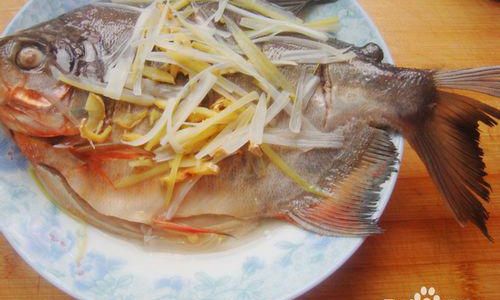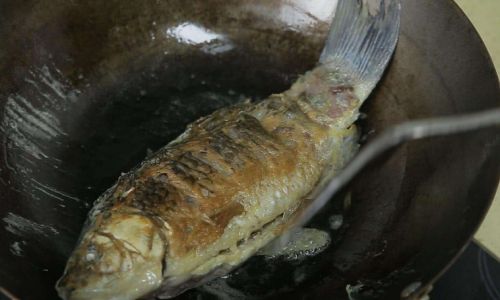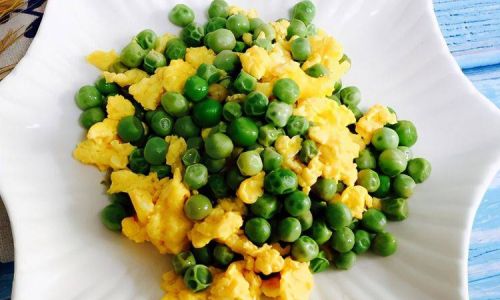Introduction
Fish, a staple in countless cuisines worldwide, offers a versatile platform for culinary creativity. Its delicate flavor, tender texture, and nutritional benefits make it a favorite among chefs and home cooks alike. However, achieving that perfect balance of flavors, textures, and presentation can be a daunting task for even the most seasoned cooks. This comprehensive guide aims to demystify the process and provide you with a roadmap to cooking fish that is not only delicious but also visually appealing. From selecting the right fish to mastering various cooking techniques, we’ll explore every step necessary to turn a simple piece of fish into a culinary masterpiece.

Chapter 1: Selecting the Right Fish
The first and perhaps most crucial step in cooking fish is selecting the right species. Different types of fish have distinct flavors, textures, and best-suited cooking methods. Here are some key considerations:
1 Freshness Matters
Freshness is paramount when it comes to fish. Look for fish with firm flesh, bright eyes, and red or pink gills (depending on the species). Avoid fish with a strong fishy odor, slimy texture, or dull eyes. If purchasing frozen fish, ensure it is solidly frozen with no signs of freezer burn.
2 Understanding Fat Content
Fish with higher fat content, such as salmon, mackerel, and sardines, can handle more intense cooking methods like grilling or baking with higher temperatures. Leaner fish like cod, haddock, and sole are best suited for gentle cooking methods like steaming or poaching to prevent drying out.
3 Seasonality
Choosing seasonal fish ensures not only freshness but also supports sustainable fishing practices. Research the seasonal availability of fish in your area and plan your meals accordingly.
4 Variety for Flavor Exploration

Don’t be afraid to experiment with different types of fish. Each species brings its unique flavor profile, allowing you to explore a wide range of culinary possibilities.
Chapter 2: Preparation Techniques
Proper preparation is essential for enhancing the flavor and texture of your fish dishes. Here are some key steps:
1 Scaling and Cleaning
If working with whole fish, scaling and cleaning are necessary steps. Use a fish scaler to remove scales and a sharp knife to gut and clean the fish thoroughly. Rinse under cold running water and pat dry with paper towels.
2 Filleting and Boning
For boneless fillets, use a sharp knife to carefully remove the fillets from the fish, ensuring you remove all bones and pin bones. Practice makes perfect, so don’t hesitate to ask for help or watch tutorials if you’re new to this process.
3 Brining and Marinating
Lean fish can benefit from a brief brine (saltwater solution) to add moisture and flavor. Marinating fish in acidic ingredients like lemon juice, vinegar, or wine can tenderize the flesh and add depth of flavor. Always marinate in the refrigerator and avoid over-marinating, which can cure the fish and make it tough.

4 Seasoning
Simple seasoning with salt, pepper, and herbs can elevate your fish dish. Experiment with different herbs and spices to find combinations that complement the fish’s natural flavor.
Chapter 3: Cooking Techniques
The cooking method you choose will significantly impact the final outcome of your fish dish. Here are some popular techniques:
1 Grilling
Grilling is perfect for fatty fish like salmon, tuna, and swordfish. Preheat your grill to medium-high heat and oil the grates to prevent sticking. Season the fish lightly and place it skin-side down first. Grill until the skin is crispy and the flesh is cooked to your liking.
2 Baking
Baking is a versatile method suitable for most types of fish. Preheat your oven to 375°F (190°C). Place seasoned fish on a lightly oiled baking sheet or in a baking dish and bake until cooked through, typically 10-20 minutes depending on thickness.
3 Poaching

Poaching is gentle cooking in simmering liquid, often water or a flavorful broth. This method is ideal for lean fish like sole, cod, and haddock. Use a poaching basket or gently lower the fish into the simmering liquid and cook until tender.
4 Steaming
Steaming preserves the fish’s natural juices and flavors. Use a steaming rack or bamboo steamer and place seasoned fish fillets or whole fish in the steamer basket. Steam over boiling water until cooked through.
5 Sautéing
Sautéing fish in a hot pan with butter, oil, or a combination of both adds a rich, caramelized flavor. Use a non-stick pan, add oil or butter, and heat until shimmering. Season the fish and cook until golden brown on both sides.
6 Frying
Deep-frying or pan-frying fish can create crispy, golden-brown exteriors. For deep-frying, use a neutral oil like canola or peanut oil heated to 350°F (175°C). For pan-frying, use a combination of flour, cornstarch, and baking powder to create a light, crispy coating.
Chapter 4: Finishing Touches
Once your fish is cooked, don’t neglect the finishing touches that can elevate your dish from good to great.

1 Garnishing
Simple garnishes like fresh herbs, lemon slices, or a drizzle of olive oil can add a burst of color and flavor. More elaborate garnishes like citrus zest, microgreens, or edible flowers can transform your dish into a visual masterpiece.
2 Sauces and Condiments
Pair your fish with complementary sauces to enhance its flavor. Tartar sauce, hollandaise, beurre blanc, or a simple squeeze of lemon juice can make all the difference. Experiment with different sauces to find what best suits your fish and personal taste preferences.
3 Serving Suggestions
Serve your fish with sides that complement its flavor and texture. Starchy sides like rice, potatoes, or pasta can soak up sauces, while vegetables like asparagus, broccoli, or a fresh salad can add color, texture, and additional nutrients.
Conclusion
Cooking fish beautifully is an art that combines science, creativity, and a keen sense of taste. By selecting fresh, seasonal fish, preparing it properly, choosing the right cooking method, and adding thoughtful finishing touches, you can transform a simple piece of fish into a culinary delight. Remember, cooking is a journey of discovery, so don’t be afraid to experiment and find what works best for you. With practice and patience, you’ll soon be mastering the art of cooking fish and delighting your family and friends with every meal. Happy cooking!






0 comments